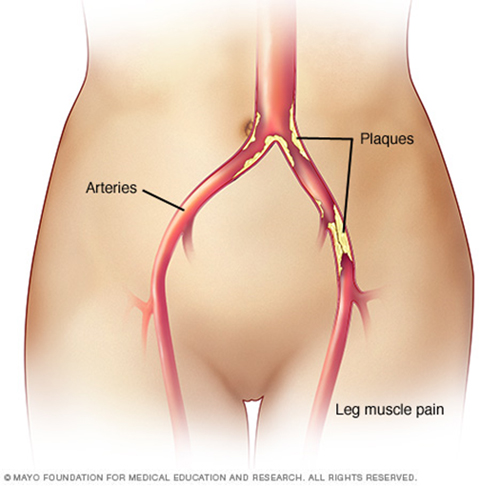peripheral arterial disease
peripheral arterial disease your arteries deliver oxygen -rich blood from your heart to other parts of your body. Your peripheral arteries carry blood away from the heart to your arms and legs. The peripheral arteries in your legs are extensions of the largest artery in your body, the aorta. The aorta travels down through your abdominal region and branches off into the iliac arteries of each leg.
The iliac arteries further divide into smaller arteries and deliver blood down your legs to your toes. Healthy peripheral arteries are smooth and unobstructed, allowing blood to flow freely to the legs and provide oxygen, glucose, and other nutrients that your legs need. Typically with age, the peripheral arteries build up plaque, a sticky substance made up mostly of fat and cholesterol. Plaque narrows the passageway within the arteries and causes them to become stiff.
Peripheral arterial disease results when the peripheral arteries become too narrow or obstructed and limit the blood flow to the legs. If left untreated, the peripheral arterial disease can cause pain or aching in the legs, difficulty with walking, resting pain in the foot at night in bed, non -healing sores or infections in the toes or feet, and can lead to limb loss in its most severe form. In addition, it can be associated with other serious arterial conditions leading to heart attacks and stroke.

